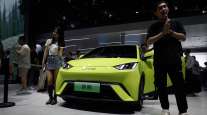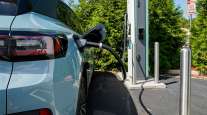Why Public EV Chargers Almost Never Work as Fast as Promised
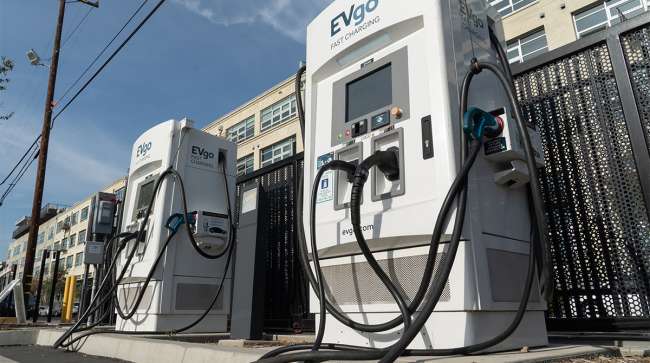
[Stay on top of transportation news: Get TTNews in your inbox.]
At U.S. public stations promising EV charging speeds of 100 kilowatts or higher, the average delivered charge was only 52 kW in 2022, according to Stable Auto, which helps networks decide where to build new infrastructure. That disconnect — largely a reflection of battery power’s idiosyncrasies — is leaving many U.S. drivers guessing as to when, why and by how much their charge is being throttled.
“The reality is we really don’t have a fast-charging infrastructure today,” says David Slutzky, chairman and founder of Fermata Energy, a startup that builds vehicle-to-grid charging systems. “They almost all ratchet down the charge pretty quickly.”
There are many good reasons why even the slickest public chargers rarely run at maximum capacity. The chemical wizardry of battery power is more complex than pouring liquid in a tank, and both internal and external factors take a toll on charging speed.
For starters, an EV itself can only suck up electrons so quickly. Of the 55 electric models now available in the U.S., half charge above 200 kW and only five can charge at 350 kW. Those speeds are further compromised when it’s very hot or very cold. Temperature extremes can damage a lithium-ion battery, so automakers program their cars to slow a charge in certain temperatures.
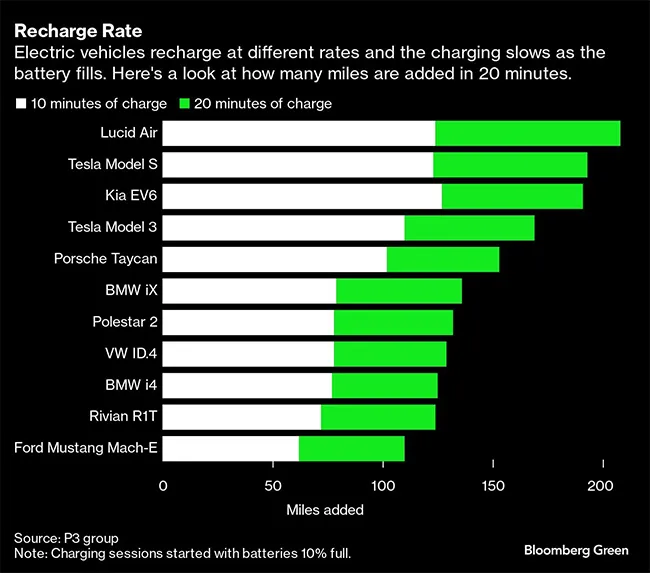
Trickier still, EV charging slows naturally as the car’s battery approaches full, in order to keep it from overheating. (Smartphones and laptops do the same thing.) The specifics of this charging curve are unique to each car, though brands are cagey about sharing those specifics, even with the people buying their products. Tesla vehicles, for one, have relatively steep charging curves, meaning the “fast” part of the charging doesn’t last long.
Finally, charging networks themselves crimp electron flow. On a hot day, the local grid might be maxed out by thirsty air conditioners, or the plugs’ hoses may be close to overheating. Many stations split power between cars, allowing them to install more cords with the same electricity. In other words, a 200 kW charger becomes a 100 kW charger when someone uses its second cord. (The U.S. Department of Energy classifies plugs 50 kW and up as “fast.”)
“There’s sort of this complicated handshake between the vehicle and the charger, so I think there’s an education gap for sure,” says Sara Rafalson, executive director of policy at EVgo.
That gap risks hurting EV adoption in the U.S., where charging speed has become a marketing metric. Automakers like to trumpet how quickly their cars can go from 10% or 20% full to 80%, while public charging stations tend to display maximum charge rate — not average or expected — right on the machines. Some 17% of U.S. public chargers are rated 100 kW-plus, according to BloombergNEF, compared with 10% in the U.K. and 2% in the Netherlands.
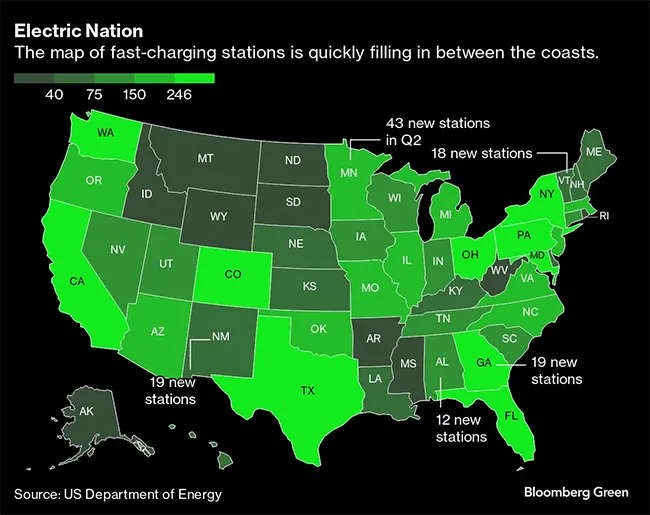
“We still see a lot of discrepancy between what the customer is expecting and what they’re seeing at the site,” says Anthony Lambkin, vice president of operations at Electrify America, which operates almost 1,000 U.S. stations. “The great news is we have a lot of new drivers and this is just one of those learning-curve things.”
Consumers are a little less sanguine. One snapshot of 103,000 Tesla charging sessions found average charging speeds of 90 kW — less than half of the maximum, according to Recurrent Auto, a startup that tracks battery health. And in a recent J.D. Power survey, EV owners scored public charging speeds near the bottom of 10 categories studied. Brent Gruber, executive director of J.D. Power’s EV practice, says consumers develop false expectations “when you plaster those [kilowatt] numbers on the charger itself.”
Want more news? Listen to today's daily briefing above or go here for more info
Charging executives concede that they could do more to educate consumers, particularly those new to electric cars. “That is still a challenge,” Lambkin says. “But there’s a real tech aspect to this that seems to draw people in. People get very, very excited when they see that they’re getting their maximum charge rate.”
Charging’s inherent complexity means the speed gap will never close entirely — but it should narrow in the near future. Charging networks are building faster and larger stations in the U.S., which will ease the need for power dilution across plugs. Since the end of 2022, every station built by Electrify America has been capable of 350 kW, and a couple of its sites now have 20 charging slots.
Carmakers have also realized that max charging rate is a deciding factor for car buyers, and are dialing it up on coming models. “There will be a catch-up on the technology side that should meet that catch-up on the learning-curve side,” Lambkin says.



